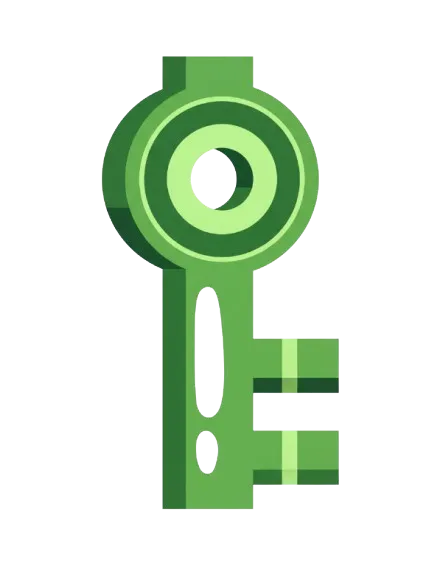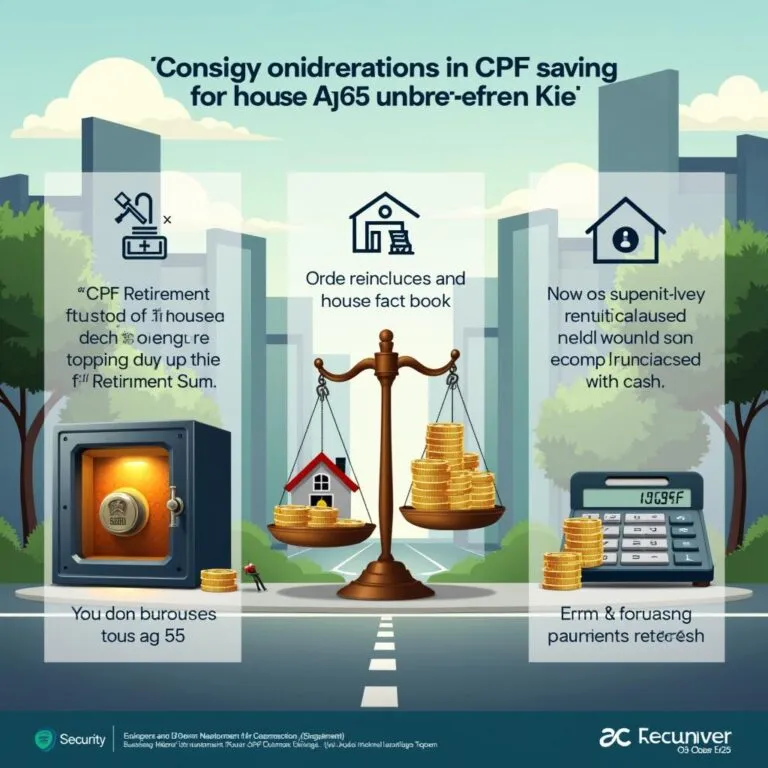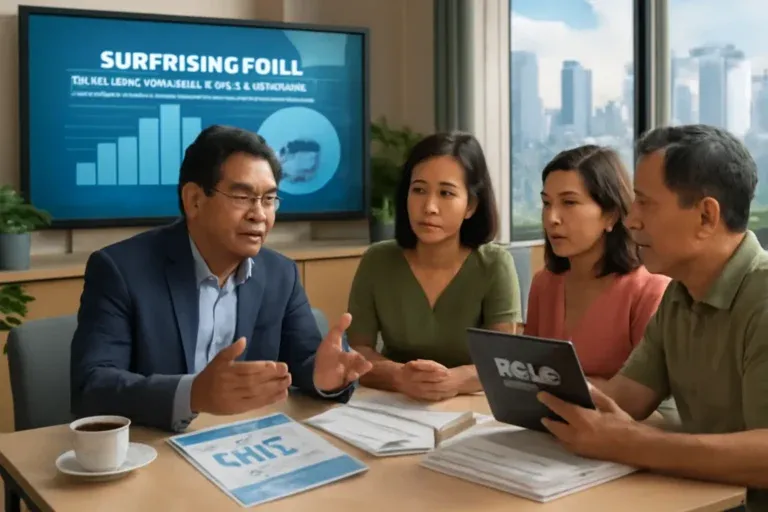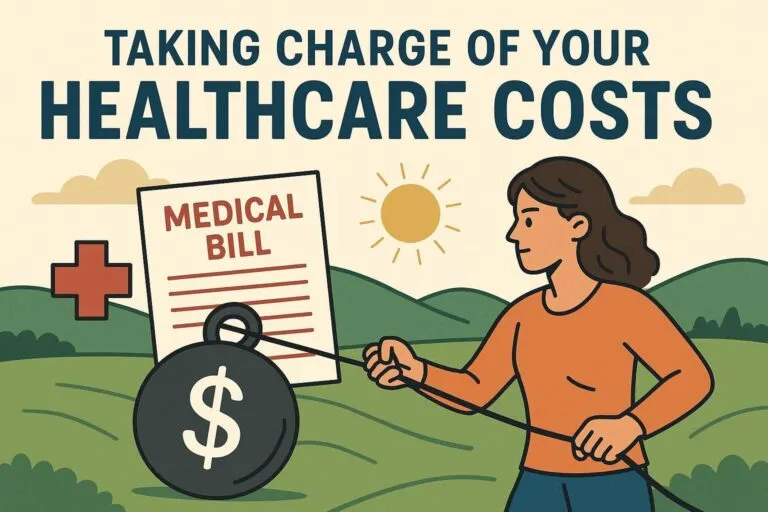Confessions of a First-Time Homebuyer in Singapore: Surprises, Snags, and Smarter Moves
Picture this: I’m 25, holding packet nasi lemak in one hand, scrolling through resale listings with the other at midnight. That’s when it hits—buying a home in Singapore isn’t just checklists and calculators; it’s a quirky mix of dreams, numbers, and acronyms that could rival a bowl of alphabet soup. Whether you’re trying to decode BTO launches or panicking at the sound of ‘TDSR,’ this guide blends real stories, unexpected tidbits, and must-know tips for making your first home buy slightly less scary.
Your CPF, Your Lifeline: Don’t Spend It All in One Place
When you’re buying your first home in Singapore, your CPF Ordinary Account (OA) can feel like a magic wallet. It pays for your downpayment, Buyer’s Stamp Duty, legal fees, and even Home Protection Scheme (HPS) premiums for HDB flats. But here’s the catch: CPF isn’t just for your home—it’s also your safety net for retirement and healthcare. As the saying goes,
‘The more you spend on housing, the less you will have for other needs, your retirement and your healthcare.’
What Your CPF OA Can (and Can’t) Pay For
- CPF OA covers: Downpayment requirements in Singapore, Buyer’s Stamp Duty, legal fees, HPS premiums (for HDB only), and monthly housing loan repayments.
- CPF OA can’t cover: Agent fees, renovation costs, furniture, resale levy, or Cash Over Valuation (COV)—these must be paid in cash.
Don’t Overcommit: Know the Limits
It’s tempting to use as much of your CPF savings for home buying as possible, but there are limits to protect your future. For a new HDB BTO with a HDB loan, there’s no CPF usage cap. But for resale flats or if you’re taking a bank loan, you can only use your OA up to the lower of the property price or valuation—unless you’ve set aside your Basic Retirement Sum (BRS). After 55, the BRS becomes even more important, as it determines how much CPF OA you can continue to use for your home loan.
Plan Ahead: CPF Housing Usage Calculator & Home Purchase Planner
Before you commit, use the CPF housing usage calculator and Home Purchase Planner. These tools help you estimate how much of your OA you can use, based on your property type, price, and loan. They also show how your housing decisions affect your retirement goals—so you don’t end up house-rich but cash-poor.
Watch Your OA Contributions Over Time
| Age Group | OA Monthly Contribution Example | What to Watch For |
|---|---|---|
| Under 35 | $1,500 | Higher OA inflow, easier to service loans |
| 35–45 | OA drops | OA inflow decreases, risk of outflow exceeding inflow if salary unchanged |
| Above 55 | BRS set-aside | Less OA available for housing, more reserved for retirement |
Remember, your CPF OA is a lifeline for both your home and your future. Use it wisely—don’t spend it all in one place.

BTO vs Resale vs ‘Secret Option C’: What Nobody Tells You About Loans
Let’s get real about HDB vs bank loans comparison—because the fine print can trip you up faster than you can say “option fee.” As of August 2024, both HDB and bank loans cap your borrowing at 75% of your flat’s price. But here’s where things get interesting: the rules for downpayment requirements in Singapore and how you pay them are totally different.
HDB Loan vs Bank Loan: The Real Differences
- HDB Loan: You can cover your 25% downpayment using CPF, cash, or a mix. The interest rate is stable—pegged at just 0.1% above the CPF OA rate. As one expert puts it:
‘HDB loan interest rate is pegged at 0.1% above the CPF OA interest rate, while bank loan interest rates can vary across banks.’
- Bank Loan: You must pay at least 5% of the property price in cold, hard cash. The rest (up to 20%) can be paid with CPF OA or cash. Bank loan rates? They fluctuate, so your monthly payments could change over time.
Here’s a quick breakdown for a $500,000 flat:
| Loan Type | Downpayment | Cash Needed | CPF Allowed |
|---|---|---|---|
| HDB Loan | $125,000 (25%) | As low as $0 | Up to $125,000 |
| Bank Loan | $125,000 (25%) | $25,000 (5%) | Up to $100,000 |
What About CPF Usage and Valuation?
Here’s a curveball: for resale HDB flat financing options, you can only use CPF up to the lower of the purchase price or valuation—unless you’ve set aside your Basic Retirement Sum (BRS). This can catch buyers off guard, especially if you’re banking on using more CPF for your downpayment.
Case Study: Cia and Chandra’s Loan Dilemma
Take Cia and Chandra. They’re eyeing a $500,000 flat. With an HDB loan, they can pay the full downpayment using CPF or cash. With a bank loan, they must cough up $25,000 in cash, and the rest can be CPF or cash. If the flat’s valuation is lower than the price, their CPF usage is capped—unless both have set aside their BRS. Suddenly, their loan choice isn’t just about rates, but about liquidity and CPF planning.
And remember: once you refinance your HDB loan to a bank loan, there’s no going back. Choose wisely—it’s like picking your team in a family Monopoly game. No take-backs!
Acronym Overload: Decoding MSR, TDSR, and Other Tests of Financial Fitness
Let’s be honest: as a first-time home buyer in Singapore, the endless stream of acronyms can feel like a secret code only bankers understand. But here’s the truth—terms like Mortgage Servicing Ratio (MSR) and Total Debt Servicing Ratio (TDSR) aren’t just bureaucratic headaches. They’re actually your best safety nets, designed to keep you from biting off more than you can chew (and living on instant noodles for the next 30 years).
Mortgage Servicing Ratio Explained: What’s MSR?
MSR is a rule that applies if you’re buying an HDB flat or Executive Condominium. It caps your monthly housing loan repayments at 30% of your gross monthly income. This means if you earn $5,000 a month, your HDB loan repayments can’t exceed $1,500. It’s the government’s way of making sure you don’t overcommit and end up in financial hot water.
Mortgage Servicing Ratio TDSR: The Big Picture
While MSR focuses just on your housing loan, TDSR takes a wider view. The Total Debt Servicing Ratio limits all your monthly debt repayments—including car loans, credit cards, and your new mortgage—to 55% of your gross monthly income. So, if you’re juggling multiple loans, TDSR is the gatekeeper ensuring you don’t tip into dangerous territory.
First-Time Home Buyer Tips Singapore: How Much Is Too Much?
- Tip: Keep your housing loan repayments under 25% of your gross monthly income—even stricter than the MSR cap. As one expert puts it:
“As a tip for financial prudence, you can consider allocating less than 25% of your gross monthly income to housing installments…”
- Buy a property priced within five years of your combined annual income.
- Build up at least six months’ worth of mortgage installments in your CPF OA account for emergencies.
Home Purchase Planner Singapore: Simulate Your Future Self
Not sure where you stand? Digital tools like the Home Purchase Planner Singapore let you input your income, expenses, and even “what if” scenarios—like taking a sabbatical or facing a pay cut. These simulators help you stress-test your plans, so you’re not caught off guard if life throws a curveball.
Remember, your CPF OA contributions decrease as you age, so plan for future cash flow changes. The earlier you pay off your mortgage (ideally before age 55), the more you’ll have set aside for retirement.
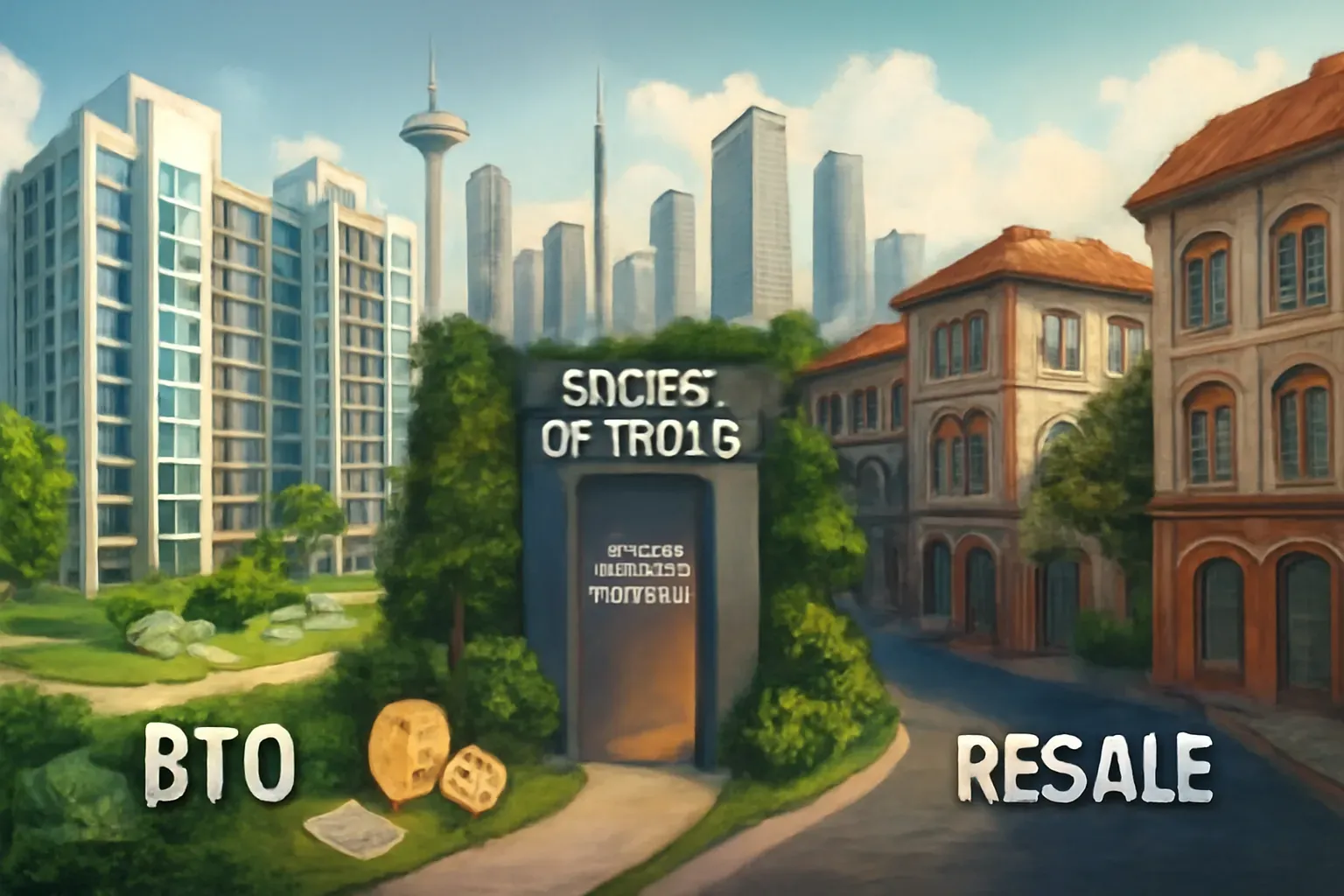
The (Not-So-Fine) Print: Hidden Costs, Insurance—and Why CPF Wants Their Money Back
So, you’ve found your dream home and are ready to make an offer. But before you get too excited, let’s talk about the hidden costs that can catch first-time buyers off guard. The sale price is just the beginning—there’s a whole list of extra expenses you’ll need to budget for.
Buyer’s Stamp Duty and Additional Buyer Stamp Duty: The Upfront Shock
First up, Buyer’s Stamp Duty (BSD) and Additional Buyer Stamp Duty (ABSD) are mandatory for every property purchase in Singapore. BSD is calculated based on your property’s purchase price or market value (whichever is higher), and ABSD may apply if you’re buying a second property or if you’re not a Singapore citizen. These duties can add thousands—or even tens of thousands—to your upfront costs, so don’t overlook them.
Legal Fees, Agent Commissions, and More
Don’t forget about legal fees for home purchase, which cover conveyancing and paperwork, and agent commissions if you’re using a property agent. Renovation, furniture, and even cash over valuation (COV) for resale flats are all out-of-pocket expenses—your CPF Ordinary Account (OA) can’t be used for these.
Home Protection Scheme (HPS): Mortgage Insurance Singapore-Style
If you’re using CPF to pay your HDB loan, you’re automatically enrolled in the Home Protection Scheme (HPS). This is a mortgage insurance plan designed to protect you and your loved ones from losing your flat if you pass away, become terminally ill, or suffer total permanent disability. HPS premiums are affordable and deducted straight from your CPF OA. If you’re paying your mortgage in cash, HPS is optional—but highly recommended for peace of mind. (For private properties, consider other mortgage insurance Singapore options.)
Why CPF Wants Their Money Back
Here’s a surprise for many first-time sellers: when you sell your property, any CPF savings you used for the purchase—including the accrued interest—must be refunded to your CPF account. As CPF puts it:
‘When you sell your property, you will need to refund the amount that you have used plus the interest on this amount to restore your retirement savings.’
This rule applies whether you’re upgrading, downgrading, or cashing out. The refund ensures you don’t shortchange your future retirement needs by overusing your CPF for housing now.
- Factor in BSD, ABSD, legal fees, and agent commissions to avoid nasty surprises.
- Remember: CPF refund (with interest) is compulsory when you sell.
- HPS is a must for HDB-CPF payers—don’t skip mortgage insurance!
Offbeat Wisdom: Tech Tools & Odd Anecdotes for Home Buyers
If you’re feeling overwhelmed by the numbers game of buying your first home in Singapore, you’re not alone. My own journey was a rollercoaster of excitement, confusion, and—let’s be honest—a few late-night Google searches. But here’s the offbeat wisdom I wish someone had shared with me earlier: let digital solutions do the heavy lifting.
The Home Purchase Planner Singapore and CPF housing usage calculator are absolute game-changers. These tools take the guesswork out of affordability, transforming intimidating math into interactive numbers you can actually play with. Just input your details—like gross monthly income, expenses, CPF Ordinary Account balance, and even your co-owner’s info—and the planner instantly estimates your home purchase budget and the housing loan amount you can realistically afford. It’s like having a financial advisor in your pocket, minus the awkward small talk.
But here’s the best hack I discovered: use the planner to set your retirement payout goal. The tool doesn’t just stop at telling you what you can buy now; it shows you the retirement planning home purchase impact. As one CPF officer put it,
‘The planner also helps you to see the impact of your housing purchase on your retirement goal.’
Sometimes, this is a hard truth—your dream flat might mean a leaner retirement. But more often, it’s the reality check you need before making a decades-long commitment.
What makes these digital solutions for home buyers Singapore so powerful is their ability to factor in inflation, life stages, and cash flow. You can run multiple what-if scenarios: What if you buy a pricier flat? What if you want a higher retirement payout? The planner crunches it all, letting you see the long-term effects before you sign anything.
Here’s my unconventional advice: imagine explaining your entire flat-buying saga to your future self. What would you wish you’d known or done differently? For me, I wish I’d used these calculators earlier, before falling in love with a unit that would have eaten into my retirement dreams.
In the end, buying your first home in Singapore isn’t just about square footage or location. It’s about making smart, informed choices—ones that your future self will thank you for. Use the tech tools, face the numbers, and don’t be afraid of a little reality check. Your home, and your retirement, will be better for it.
TL;DR: Every first-time homebuyer in Singapore juggles stress, hope, and a sea of acronyms. Get familiar with CPF, pick your loan wisely, and let digital tools help plan your budget—so you can spend less time worrying, and more imagining your future living room layout.
